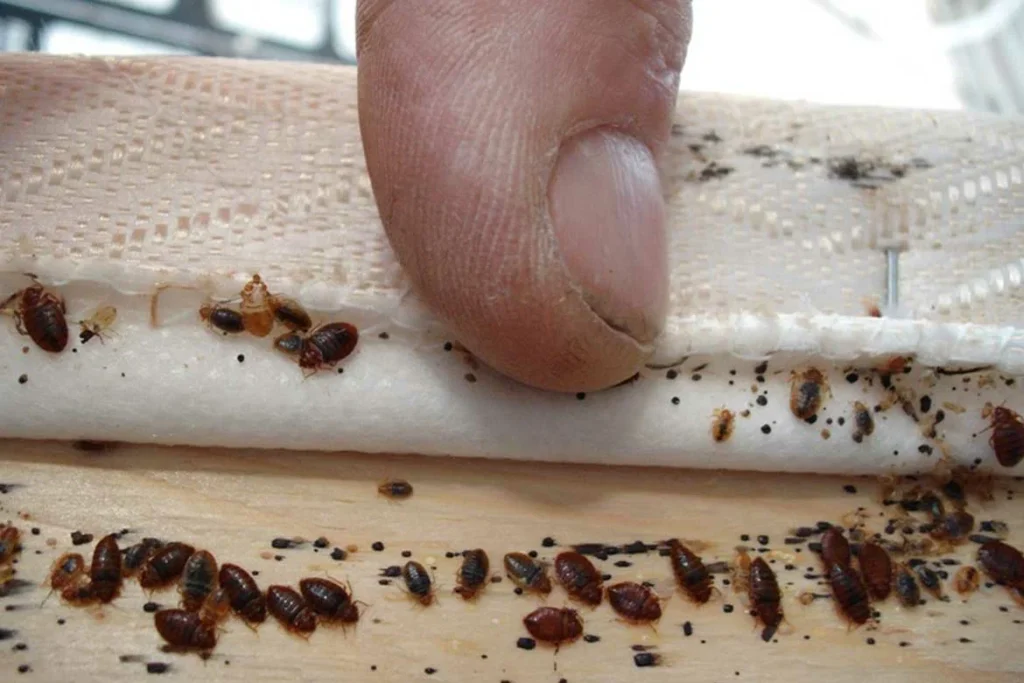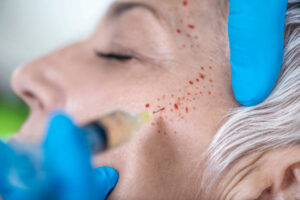
bed bug exoskeleton
Texas is home to many species of wasps, but red wasps (Polistes carolina) are among the most common and aggressive. These flying insects are known for their painful stings, large paper nests, and territorial behavior, making them a nuisance for homeowners. If left unchecked, red wasps can pose a threat to families, pets, and even structures around your home. Understanding their behavior, nesting habits, and how to keep them away is crucial for maintaining a wasp-free environment. Just like other common pests such as tiny baby termites, early detection and prevention are key to effective pest control.
This comprehensive guide will cover everything you need to know about red wasp control in Texas, from identifying them to removing nests and preventing future infestations.
Understanding Red Wasps: Identification and Behavior
Red wasps are easily recognizable by their reddish-brown bodies, black wings, and long, slender legs. Unlike yellow jackets or hornets, red wasps are solitary nest builders, preferring to construct their paper-like nests in protected areas such as under eaves, in attics, or on tree branches.
Characteristics of Red Wasps:
- Size: Approximately 1 inch in length
- Color: Reddish-brown with black markings
- Wings: Dark brown or black
- Behavior: Highly territorial, will sting if threatened
- Diet: Feeds on nectar, small insects, and caterpillars
While red wasps can be beneficial for natural pest control by feeding on other insects, their aggressive nature and tendency to build nests near homes make them a potential hazard.
Where Do Red Wasps Nest?
Red wasps prefer warm, sheltered locations where their nests are protected from predators and harsh weather. Common nesting sites include:
- Under roof eaves and soffits
- Inside sheds, barns, and garages
- Within attics and wall cavities
- On tree branches and bushes
- Under decks and porches
Because red wasps return to the same nesting sites each year, it’s essential to remove nests properly and take preventative measures to keep them from coming back.
Signs of a Red Wasp Infestation
Detecting a red wasp infestation early can help prevent a full-blown problem. Here are some signs to watch for:
- Increased wasp activity around your home
- Visible paper nests in sheltered areas
- Frequent buzzing near rooflines, attics, or trees
- Wasp sightings inside the home
If you notice any of these signs, it’s important to take action before the colony expands.
How to Safely Remove a Red Wasp Nest
Removing a red wasp nest can be dangerous, especially if the nest is large or located in a hard-to-reach area. Here are some steps to safely eliminate them:
1. Wait Until Nighttime
Wasps are less active at night, making it the safest time to approach a nest.
2. Wear Protective Gear
Cover your skin with long sleeves, gloves, and goggles to prevent stings.
3. Use Wasp Spray
Apply a wasp-specific insecticide directly onto the nest from a safe distance.
4. Remove the Nest
Once all wasps have been eliminated, carefully remove the nest using a long-handled tool and dispose of it in a sealed bag.
5. Seal Entry Points
If wasps were nesting inside your home, seal any cracks or gaps where they may have gained entry.
For those uncomfortable handling wasp nests themselves, professional pest control services can ensure safe and thorough removal.
Preventing Red Wasps from Nesting
Preventative measures can help keep red wasps from nesting near your home. Here are some effective strategies:
1. Regular Inspections
Check common nesting areas around your home, such as eaves, attics, and garages, for early signs of wasp activity.
2. Seal Entry Points
Use caulk or weather stripping to seal cracks, holes, and other entry points around windows, doors, and rooflines.
3. Eliminate Food Sources
Wasps are attracted to sugary substances and proteins, so keep trash cans sealed and avoid leaving food outdoors.
4. Hang Wasp Deterrents
Fake wasp nests or decoys can trick wasps into thinking an area is already claimed, discouraging them from nesting.
5. Use Natural Repellents
Essential oils such as peppermint, clove, and citronella can act as natural wasp deterrents when sprayed around nesting areas.
6. Install Wasp Traps
Commercial or homemade wasp traps can help capture and reduce wasp populations near your home.
By following these steps, homeowners can significantly reduce the likelihood of red wasps returning.
Professional Wasp Control Services in Texas
For severe infestations or difficult-to-reach nests, hiring a professional pest control company is the safest option. Professionals have the expertise and equipment necessary to remove wasps effectively without risking injury.
Some Texas-based pest control companies specialize in wasp extermination and prevention. When selecting a pest control service, look for:
- Licensed and insured technicians
- Safe and eco-friendly pest control methods
- Positive customer reviews and ratings
- A guarantee on wasp removal services
Just as pest control services help homeowners deal with problems like bed bug exoskeleton, they can also provide long-term solutions for red wasp infestations.
Are Red Wasps Dangerous?
Red wasps are not inherently aggressive but will defend their nest if they feel threatened. Unlike honeybees, wasps can sting multiple times without losing their stinger. For individuals allergic to wasp venom, a sting can cause severe reactions, including:
- Swelling and pain at the sting site
- Itching or hives
- Difficulty breathing
- Dizziness or fainting
If you or someone in your household experiences an allergic reaction to a wasp sting, seek medical attention immediately.
The Role of Red Wasps in the Ecosystem
Despite their reputation as pests, red wasps play a beneficial role in nature. They help control insect populations by feeding on caterpillars and other pests that damage crops and gardens. However, their presence near homes can pose risks that outweigh their benefits.
For homeowners who prefer a balanced approach, relocating wasp nests rather than extermination may be an option when working with professional pest control services.
Conclusion
Red wasps in Texas can be a nuisance, but with the right knowledge and preventive measures, you can keep them away from your home. Regular inspections, sealing entry points, and using natural deterrents can all contribute to a wasp-free environment. For severe infestations, professional pest control services offer the safest and most effective solutions.
By taking proactive steps, Texas homeowners can enjoy their outdoor spaces without the worry of painful wasp stings.





